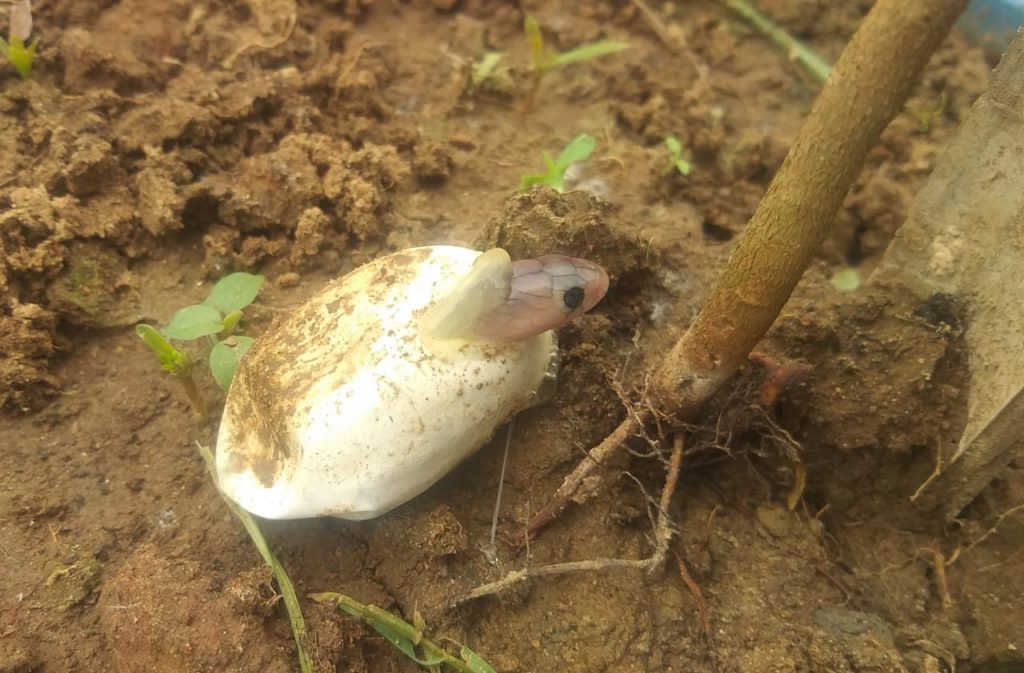Bhubaneswar: Today is World Snake Day. The word snake causes fear among people who either want to kill it or run far away from it. This year, the message is to create awareness among people so that they can be saved from snakebites.
To delve deeper into the subject, Orissa POST interacted with scientists, conservationists and wildlife activists.
Snakes play a vital role in saving our ecosystem. Therefore, they need to be saved rather than be killed or sold to mafias who extract their venom to create Chinese medicines. Snake venom is used in homoeopathic medicine and to create antivenom medicine as well.
To know more about the topic, Orissa POST interacted with Dr Pratyush Mohapatra, senior scientist (D) appointed at Zoological Survey of India Jabalpur who said, “There are 80 species of snakes in Odisha out of which eight species are potentially dangerous for humans. This includes nine species of cobras, king cobra, one species of coral snake, two species of kraits and four species of vipers.”
“Among these snakes, cobras and vipers are commonly encountered near human habitations and responsible for maximum number of snakebite cases. All species of family Elapidae, Viperidae are potentially dangerous to humans. Additionally, bites from some colubrids and Lampropids may harm humans,” he added.
Snakes of Odisha – Facts and Figures: Until now, there has been no census conducted for snakes. Only four species of the snakes are venomous such as Russell’s viper, common krait, cobra, saw-scaled vipers. Again, the venom is divided into two parts: Hemotoxic venom and Neurotoxic venom. There is another type of venom which is found in sea snakes. It is known as cytotoxic venom. In the coastal area of Odisha, more than 21 species of sea snakes can be found.
Issues pertaining to snakes in Odisha: According to Debjeet Routray, founder of Biodiversity Conservation and Research Centre of Salepur, snakes are being killed mostly for making traditional Chinese medicines. Besides, snakes that help us control mice density often get killed through various chemicals sprayed in the paddy fields.
War Team (a wildlife organisation) founder cum secretary Krushna Keshab Sarangi, who assists the forest department at Jeypore said, “Although Odisha government put a ban on all kind of snake shows a decade ago, there still are some villages in the state where such games are still practised.”
“Snake charmers often rescue snakes from households. They then immediately break the teeth of the snakes which they use to inject venom into their prey. There are several instances where these people were collecting their venom which fetch them a good amount in national and international markets. This price ranges from several thousand to crores,” he added.
Another issue that makes snakes appear far more dangerous than they are has to do with amateurs who try their hands in catching snakes without required skills. At times, it results in fatal injuries.
Social media network has become an easy medium for these armatures who try to get accolades from their locality. This practice should be discouraged to save precious snake and human lives.
Another important challenge for snakes is the rapid urbanisation that is destroying the natural habitat of snakes. We need to change our behaviour and have compassion for wildlife. According to Article 51-A of Indian Constitution, it should be the duty of every Indian citizen to protect the environment and wildlife and to have compassion towards all living creatures.
According to the Wildlife Protection Act, 1972, snake charmers are banned and so is illegal trafficking of snakes. More than 200 volunteers and 10 organisations all over Odisha are working to save the snakes.
Myths about snakes: Since time immemorial, there have been rumours about some snakes possessing a precious stone called ‘naga mani’ which in reality never exists. Snake charmers keep such stones (rather these are dried fish eye) inside the mouth of the de-fanged snake and display it as Mani. Just a trick.
Snake charmers are immune: Most of the snakes displayed by the snake charmers are de-fanged or their venom glands which were removed by cruel surgery. Hence, bite from these snakes is not fatal. On the other hand, many snake charmers die while catching snakes in the wild or while handling venomous snakes.
Some snakes can fly: Snakes cannot fly. However, some snakes like the ornate flying tree snake and the Bronze back tree snake can glide short distance through air from higher canopy to lower canopy.
Snakes drink milk: All snakes are carnivorous and non of them can drink milk. In some festivals, snake charmers forcefully feed milk to snakes. If a snake is kept for a long period and then offered milk, it may drink some of it considering it as water but it can’t digest it.
Snakes dance to the music played by snake charmers: Snakes such as cobra and king cobra display the typical threatening posture by raising their hood. Snake charmers irritate the snakes so that they raise the hood and move their hand or some object like flute, which makes the snake to concentrate on the moving object.
Snakes take revenge: Snakes cannot remember someone’s face. Their brain is not developed like humans.
Overall, it may be said that snakes need to be saved to maintain ecological balance.
